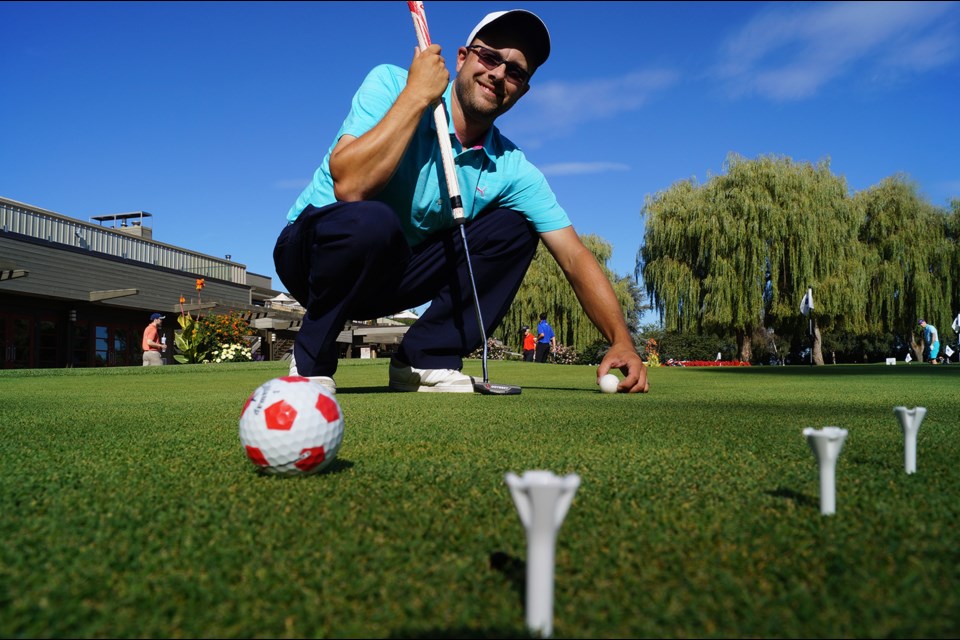This week I can report two significant developments from the Richmond Country Club.
First, I shot an 88 (plus-16) in one round, besting my end-of-September goal by one stroke and shooting better than bogey golf for the first time ever on a full course (Can I only mention my 41 (plus-five) on the back nine?).
Second, I have become the quintessential whining golfer, full of excuses and contempt for mistakes that are, for all intents and purposes, my own fault.
Over four days I shot three rounds, with the middle round being the aforementioned 88. However, it was the third round that came back to bite me in my butt; I fell apart and shot 100, my first triple-digit round in some time. I came back to the clubhouse as if I had my head in the sand, when in fact the only thing that was in the sand that round was my ball.
The excuses abounded: The mosquitoes were biting me; other golfers were distracting me (my “scouts honour” round of 88 came golfing alone); it was windy; I hadn’t eaten.
However, associate pro Graham Ogden told me that it was probably fatigue.
‘Oh, really?’ I asked.
Of course! Fatigue. Let me just file that one in the old cabinet.
To be fair, I probably was a bit run down. That much golf in such a short amount of time does test your muscles in ways that players like me — who don’t play routinely — aren’t used to.

Wood’s book of excuses:
- My lie was terrible
- It’s too windy
- Jerry was swearing in my backswing
- I didn’t have a long tee
- I was tired
- I didn’t mean to hit the ball
- I just can’t get a bounce
- My putt hit a divot
- Mosquitoes are biting me
- I didn’t get to warm up
Putting exercises are a simple way to improve and have fun
Sandwiched in between rounds was a lesson on putting from head pro Mark Strong.
There are two major factors you need to consider when putting: speed and direction.
In order to reach your target with the right distance you want to have consistent momentum. Strong told me you don’t want to let gravity take control of the club, but rather you should assume some control when the putter is coming down.
Treat your swing like a pendulum; the higher you raise it the further the ball will go when it comes down on the ball. But, keep the momentum consistent so you can better judge your distance as time progresses.
Meanwhile, keep your eyes held over the ball and the ball centre to your feet, if not slightly ahead.
There are some exercises you can do to improve your putting at the local driving range or practice greens.
For one, you can take three balls and hit them without looking at where the ball goes. Then take a guess as to where they are. When you start guessing right you’re likely to have a better mental understanding of your physical movements.
Another fun game is to put four or five tees in a row from six to 20 feet out, spaced evenly apart. Then try hitting a ball into each “zone.”
Strong says a player like me should be making two-putts on about 90 per cent of my 20-foot shots.
For now, I am relying on my eyes to read greens and how the ball reacts. I’m actually fairly cerebral with my assessments so these lessons should do good things in improving the technical aspects of my stroke.



